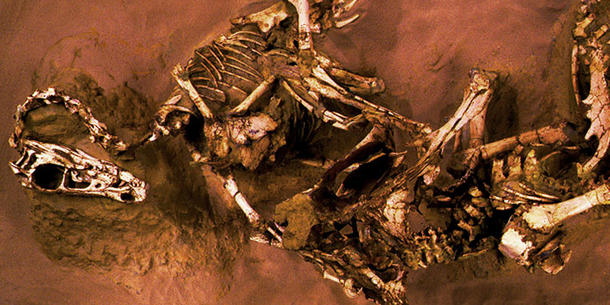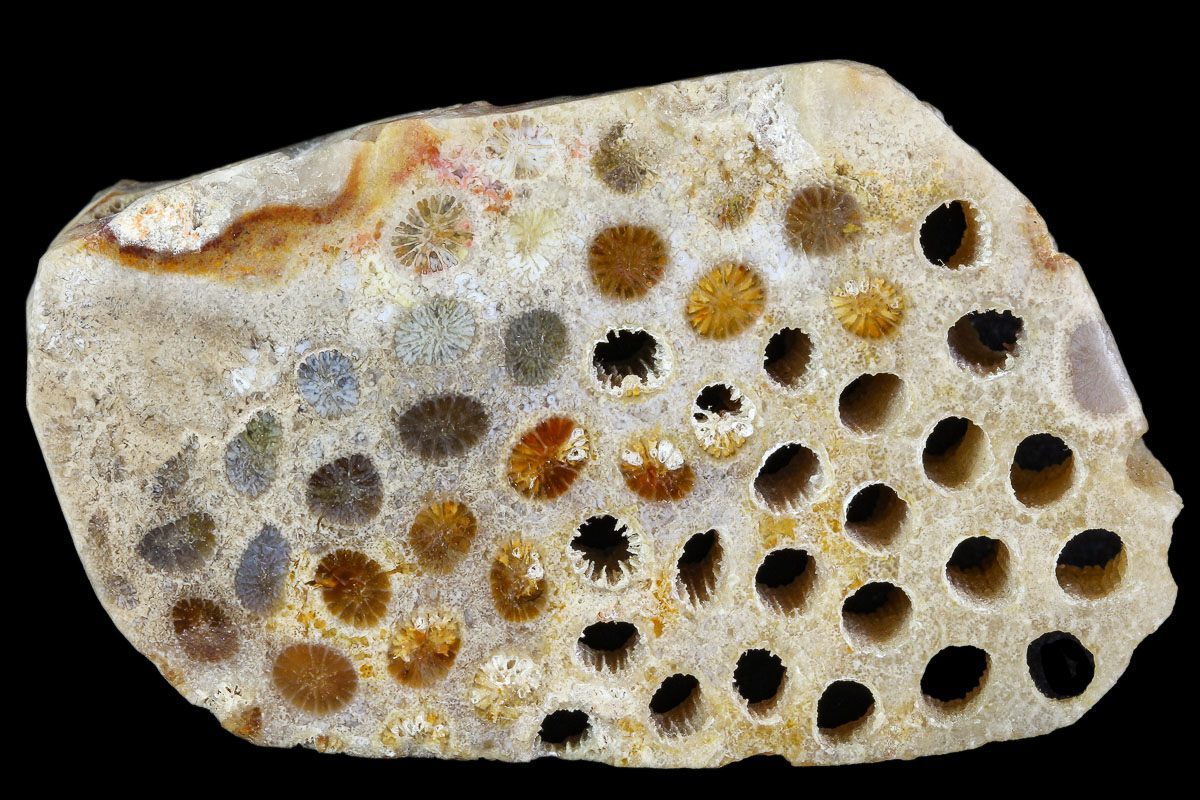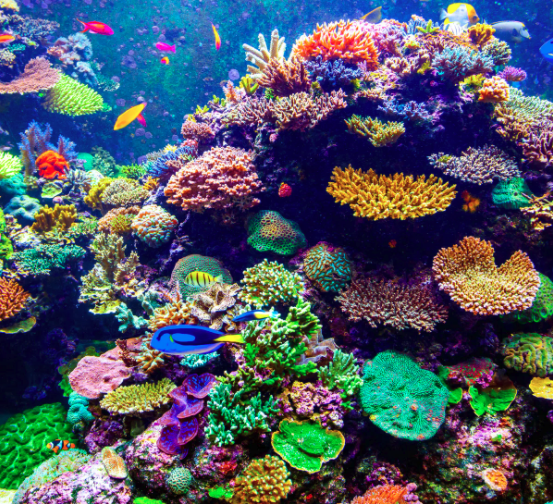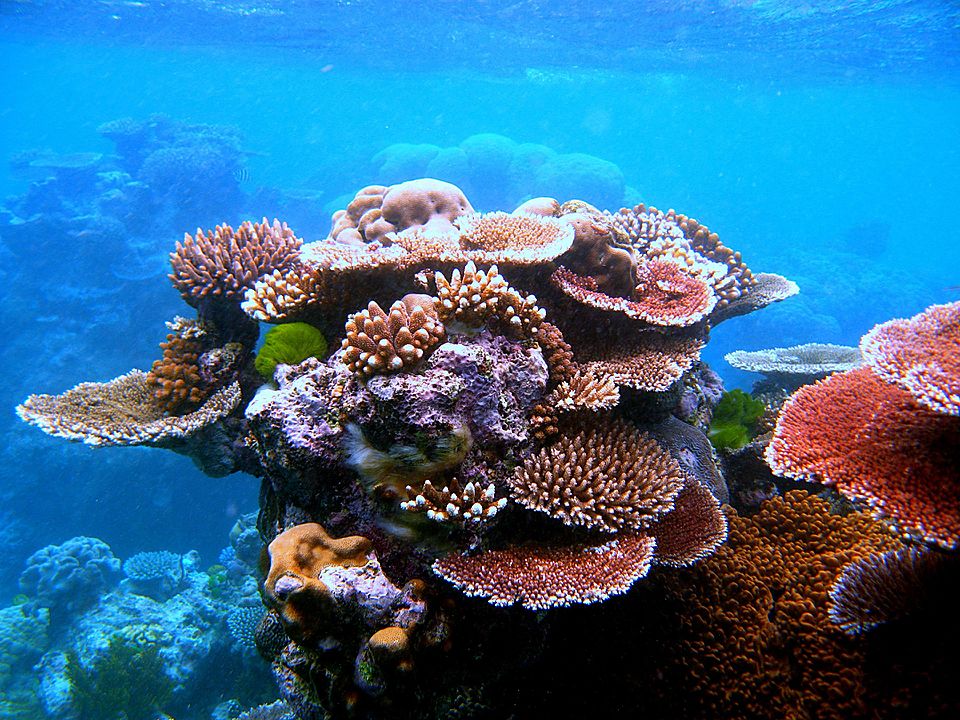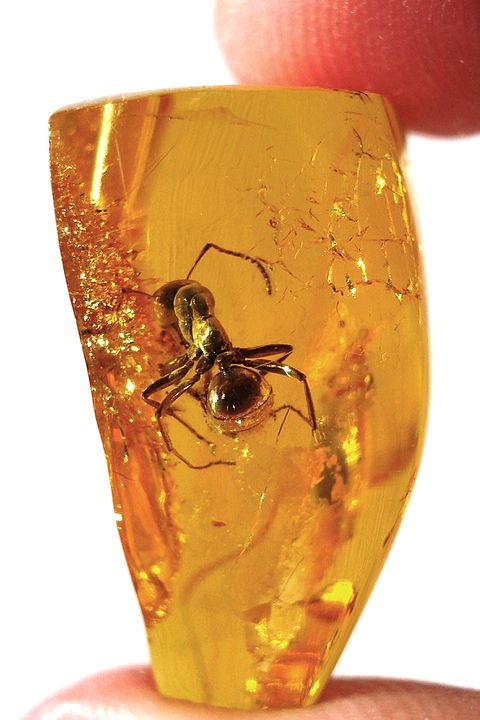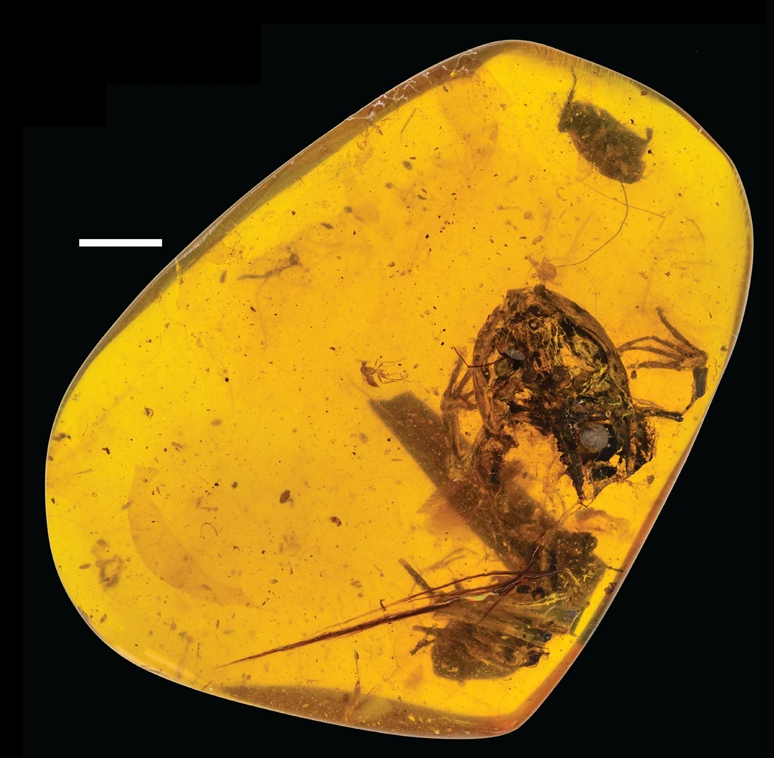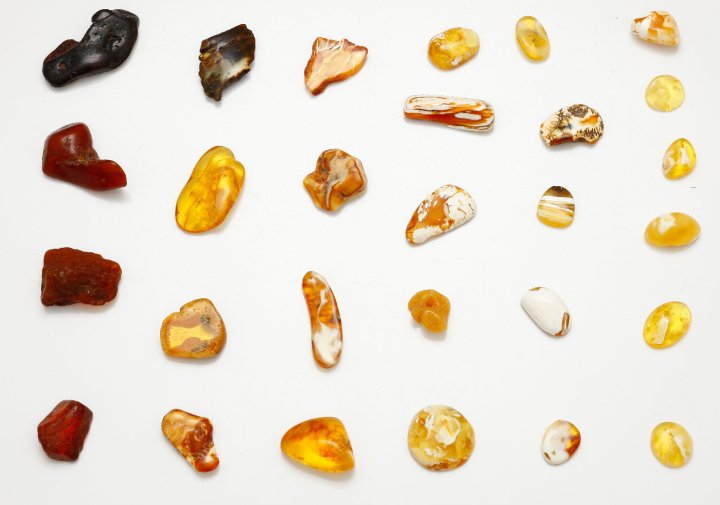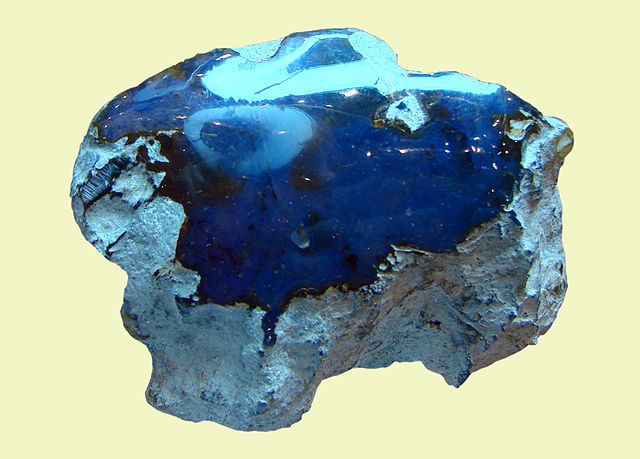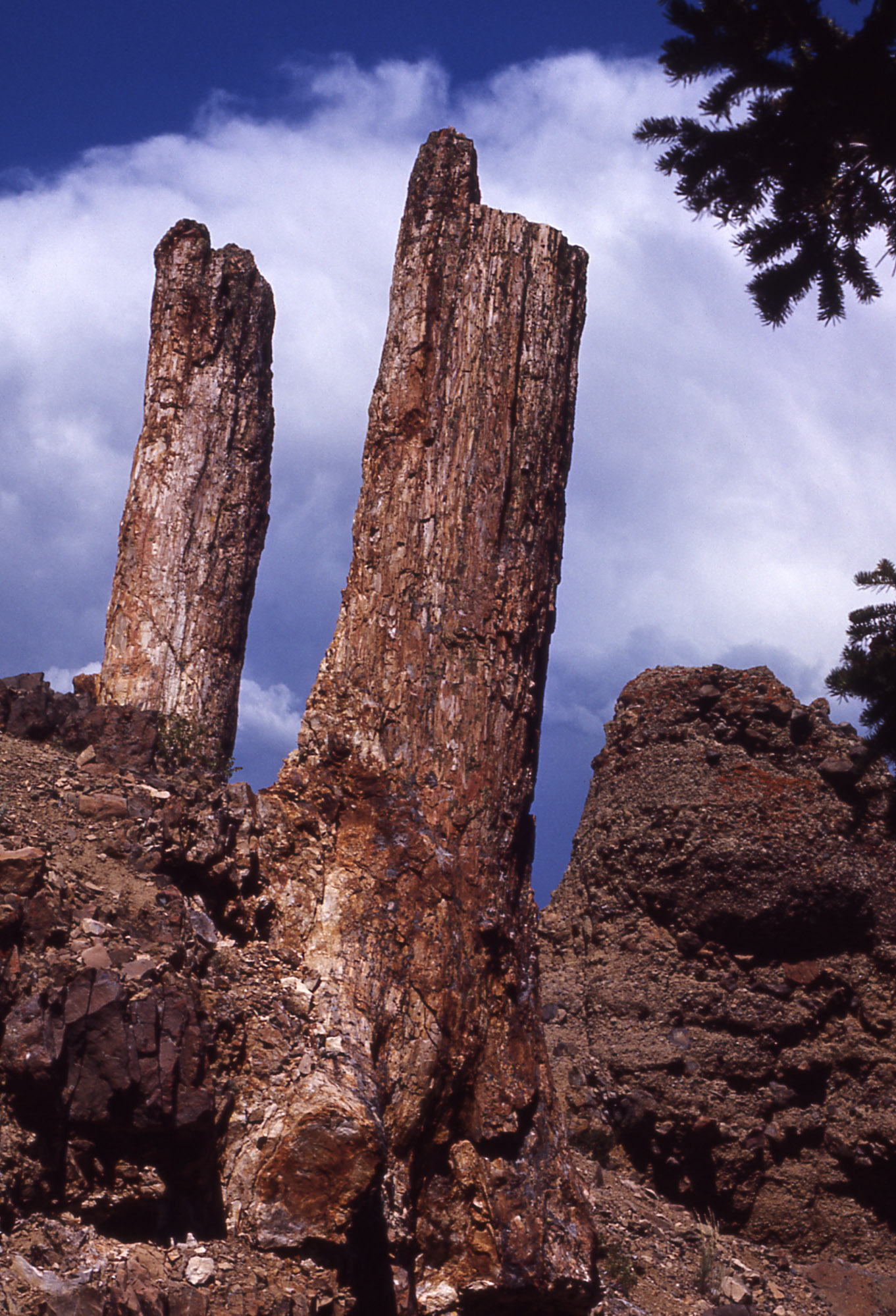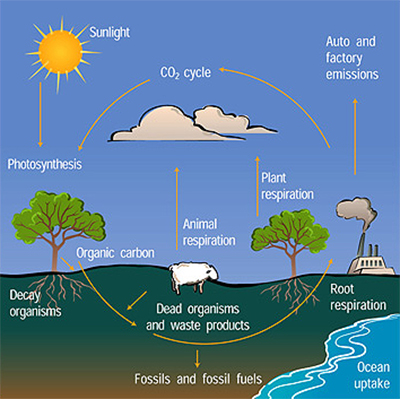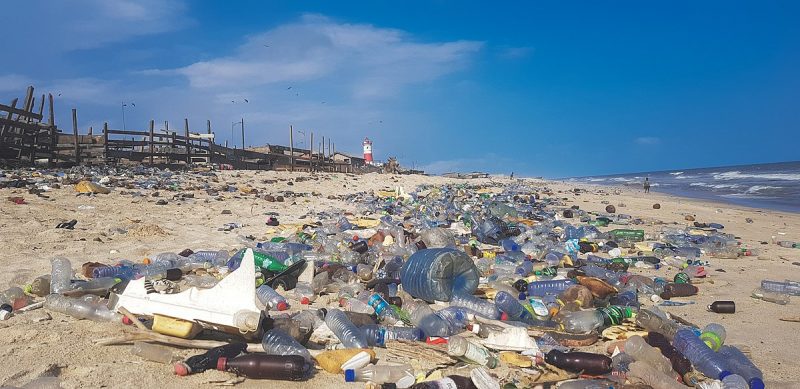Study Guide: Fossils
- Fossils are part of the cycle of life. All living being are made of matter, and when they die the matter in their bodies returns to the material world.
- A fossil is any evidence of prehistoric life (plant or animal) that is at least 10,000 years old.
- The most commonly found fossils are bones and teeth, but fossils of footprints and skin impressions exist as well.
- Fossils are excavated from many environments, including ancient riverbeds, lakes, caves, volcanic ash falls, and tar pits.
- Fossils are usually found in sedimentary rocks—rocks that formed when sand, silt, mud, and organic material settle to form layers that are then compacted into rock.
Fossils
Fossils are part of the cycle of life. All living being are made of matter, and when they die the matter in their bodies returns to the material world.
A fossil is any evidence of prehistoric life (plant or animal) that is at least 10,000 years old. The most commonly found fossils are bones and teeth, but fossils of footprints and skin impressions exist as well.
Fossils are excavated from many environments, including ancient riverbeds, lakes, caves, volcanic ash falls, and tar pits.
Fossils are classified as either body fossils or trace fossils. Body fossils were parts of the organism, such as bones or teeth. Trace fossils are all other types of fossils, including foot impressions, burrows, and dung.
Oil and coal are also forms of fossils because they are made from the remains of ancient plants and animals.
Fossil Formation
Most living things never became fossils. Their bodies were likely consumed by other organisms, or worn away by wind or water.
Sometimes conditions are right. The most common form of fossilization happens when an animal is buried by sediment, such as sand or mud, shortly after it dies, and its bones are protected from rotting by layers of sediment.
Where are Fossils Found?
Fossils are usually found in sedimentary rocks—rocks that formed when sand, silt, mud, and organic material settle to form layers that are then compacted into rock.
Bones
The “dinosaur bones” we see in museums aren’t really bones at all. Through the process of fossilization, ancient animal bones turn into rocks. As the body decomposes all the fleshy parts dissolve and only the hardest parts remain, such as bones, teeth, horns and hair.
Over millions of years, water in the nearby rocks fill spaces in the bones, and minerals in the water gradually harden. When the minerals have completely replaced the organic tissue, what’s left is a solid rock formed in the shape of the original.
Coral
Fossil coral is a natural gemstone that is created when prehistoric coral is gradually replaced with agate. Corals are marine animals and it is their skeletons that are fossilized and preserved. The fossil coral forms through hardened deposits left by silica-rich waters.
Coral reefs are the most diverse of all marine ecosystems, and may be the most diverse ecosystems on earth. Perhaps one-quarter of all ocean species depend on coral reefs for food and shelter.
This is a incredible when you consider that reefs cover less than 1% of the Earth’s surface and less than 2% of the ocean bottom. Because they are so diverse, coral reefs are often called the rain forests of the sea.
Coral reefs are also important to people. They provide food, protection of shorelines, jobs based on tourism, and medicines.
Unfortunately, humans pose a great threat to coral reefs. Overfishing and destructive fishing techniques, pollution, global warming, changing ocean chemistry, and invasive species all take a huge toll.
Some reefs that existed for thousands of years have been destroyed, and in many other places today’s reefs are a pale shadow of what they once were.
Amber
Amber is a very soft rock that results from fossilized tree resin.
Often insects and small animals become trapped by the tree sap and become fossilized within the amber.
Amber comes in many colors. It is popular for its beauty and is often used for jewelry.
Petrified Wood
Petrified wood forms when plant material is buried by sediment and protected from decay. Groundwater rich in dissolved minerals flows through the sediment, replacing the original plant material with silica, calcite, pyrite, opal, etc.
Fossil Fuels
We need energy. Houses must be heated, energy is required for industry and agriculture and even within our own bodies a constant flow of energy takes place.
Coal, crude oil, and natural gas are all fossil fuels because they were formed from the fossilized, buried remains of plants and animals that lived many millions of years ago. Because of their origin in living matter, fossil fuels have a high carbon content.
Fossil fuels are the main source of power for our industrial society. They power our energy and heat production, support agriculture and transportation, and provide the basic materials for plastic and many other artificial products. Over 99% of plastic is made from chemicals derived from fossil fuels.
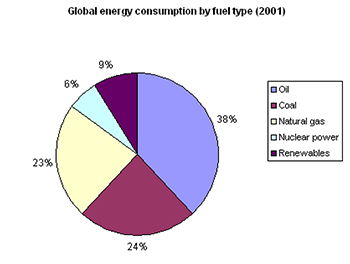
Coal
Coal is a solid fossil fuel formed over millions of years by decay of land vegetation. When layers are compacted and heated over time, deposits are turned into coal. Coal is quite abundant compared to the other two fossil fuels. Current coal supplies could last for 200 years or more. Coal is usually extracted in mines.
Oil
Oil is a liquid fossil fuel that is formed from the remains of marine microorganisms deposited on the sea floor. After millions of years the deposits end up in rock and sediment where oil is trapped in small spaces.
It can be extracted by large drilling platforms. Oil is the most widely used fossil fuel.
Crude oil consists of many different organic compounds which are transformed to products in a refining process. It is applied in cars, jets, roads and roofs and many other.
Oil cannot be found everywhere on earth, and there have been many wars over oil supplies. A well-known example is the US invasions of Iraq after US oil corporations lost out in a bid to control Iraq’s massive oil reserves.
Natural Gas
Natural gas is a gaseous (like air) fossil fuel that is easy to use and relatively clean to burn compared to coal and oil.
Like oil, natural gas is formed from the remains of marine microorganisms. Scientists predict that we may use up most of the available natural gas by the middle or end of the 21st century.
Natural gas is mainly made of methane (CH4). Did you know that the bacteria in our intestines also produce methane? This results in the famous musical tooting affect.
Methane deposits exist under heavy gravity and are compressed in small volumes at large depths in the earth. Like oil, it is brought to the surface by drilling.
Natural gas reserves are more evenly distributed around the globe than oil supplies, and so they has not been the reason for very many wars.
Read more: https://www.lenntech.com/greenhouse-effect/fossil-fuels.htm#ixzz6kIT5rwZt
We can not keep using fossil fuels at the current rate. Energy sources can be either renewable or non-renewable. Renewable energy sources are replaced in time and will therefore not run out easily.
Non-renewable energy sources can disappear if they are overused. Fossil fuels are considered non-renewable because we are using them up far faster than they can develop. It takes many millions of years for fossil fuels to develop.
You will learn more about the Fossil Fuel Cycles in your Eighth Grade Organic Chemistry block and in High School. For now, here is the all-important Carbon Cycle. Fossil fuels play a key role in this cycle.
Plastic and Urbanite
We live in an era that many scientists have begun to call the Anthropocine, a time when human activity is leaving a permanent record on the planet’s fossil record.
Even plastic pollution is now in the fossil record, according to new research from the Scripps Institution of Oceanography at the University of California San Diego. Scientists studied layers of earth in California’s Santa Barbara Basin dating back to 1834.
They found that deposits of plastic have increased exponentially since the end of World War II, doubling about every 15 years. Most of the plastic particles were fibers from synthetic fabrics used in clothes, said the researchers, suggesting that plastics are flowing into the ocean via waste water.
Because most plastic never degrades but only breaks down into smaller and smaller particles, the remains of our plastic gadgets will spread around the world, leaving a thin line in the fossil record that will be visible millions of years.



